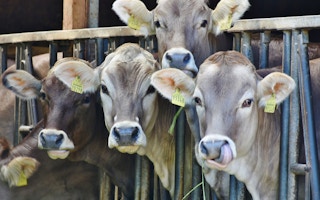Methane produced by India’s livestock population, considered the world’s largest, can significantly raise global temperatures, says a new study designed to help predict climate change linked to greenhouse gas (GhG) emissions from farm animals.
Results of the study carried out by the Indian Institute of Technology Delhi and the Deenbandhu Chhotu Ram University of Science and Technology, Murthal and published this month (January) in Ecotoxicology and Environmental Safety show that the Indian livestock emitted 15.3 million tonnes of methane in 2012.
Globally, the livestock sector is a major source of anthropogenic (human-induced causes) methane emission with annual global contribution of 14.5 per cent.
Shilpi Kumari, corresponding author of the study, tells SciDev.Net that the livestock sector in India has the potential to cause surface temperatures to surge up to 0.69 millikelvin over 20-year time period which is roughly 14 per cent of the total increase caused by the global livestock sector.
“The impact on climate change is global in result, so the negative impact due to livestock emission is not restricted to India,” Kumari says. India, with a livestock population of more than 500 million head, leads livestock- dominant countries such as Brazil, China and the US. Cattle and buffalo were found by the study to be the major sources of methane among India’s livestock accounting for 98 per cent.
Better livestock rearing practices such as using suitable feed types and improving livestock productivity can achieve reduction in methane emission, says Kumari.
“
The impact on climate change is global in result, so the negative impact due to livestock emission is not restricted to India.
Shilpi Kumari, author
Growth of livestock population is the key factor influencing levels of atmospheric methane, Kumari says. However, environmental risk management through improved livestock productivity, population stabilisation, better feed and manure use could reduce methane levels.
“In India, keeping livestock is mostly confined to the rural areas where opting for modern technologies is not possible due to dearth of money,” Kumari says.
According to Gufran Beig project director, System of Air Quality and Weather Forecasting and Research at the Indian Institute of Tropical Meteorology, Pune, the study is “noteworthy” given the background of climate change and because it highlights the need for technological solutions.
“Methane has a warming potential 20 times higher than carbon dioxide. In the Indian context, methane emissions are worrying because two major sources, livestock and paddy fields, are rapidly growing,” says Beig, “Both sources are connected to the Indian economy and food security.”
This article was originally published on SciDev.Net. Read the original article.










